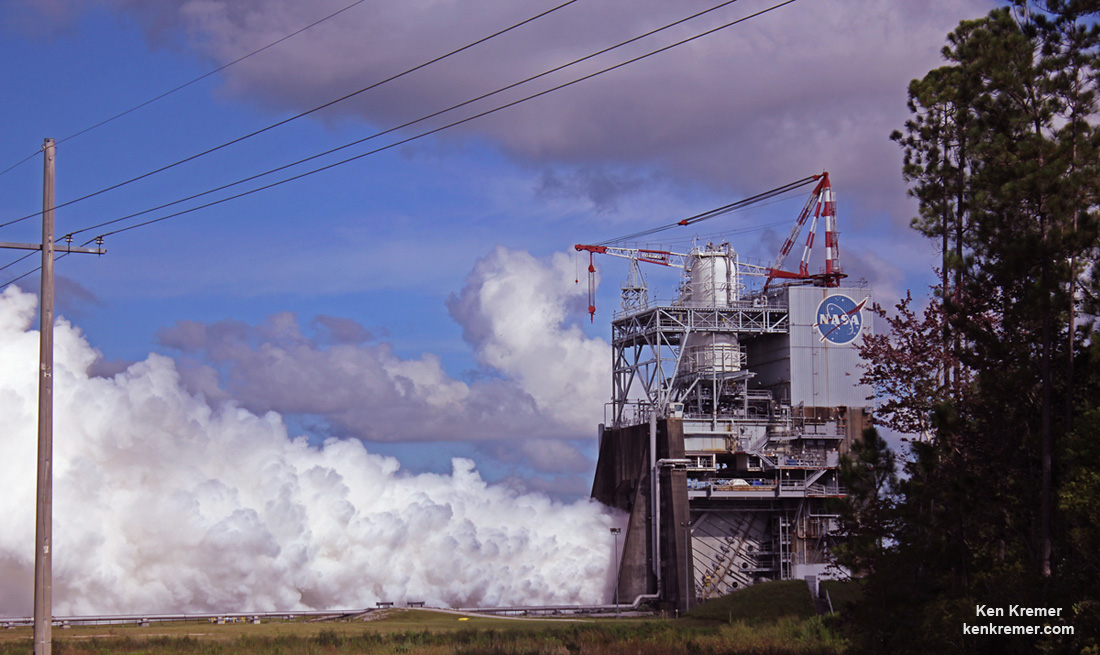
NASA STENNIS SPACE CENTER, MISS – NASA engineers successfully carried out a key developmental test firing of an RS-25 rocket engine along with its modernized ‘brain’ controller at the Stennis Space Center on Thursday, Aug. 18, as part of the ongoing huge development effort coordinating the agency’s SLS Mars mega rocket slated for its maiden blastoff by late 2018.
“Today’s test was very successful,” Steve Wofford, manager of the SLS Liquid Engines Office at NASA’s Marshall Space Flight Center in Huntsville, Alabama, told Universe Today in an exclusive interview at the conclusion of the exciting RS-25 engine test gushing a huge miles long plume of steam at NASA Stennis on Aug. 18 under sweltering Gulf Coast heat.
“It was absolutely great!”
Thursday’s full thrust RS-25 engine hot fire test, using engine No. 0528, ran for its planned full duration of 7.5 minutes and met a host of critical test objectives required to confirm and scope out the capabilities and operating margins of the upgraded engines ,which are recycled from the shuttle era.
“We ran a full program duration of 420 seconds . And we had no failure identifications pop up.”
“It looks like we achieved all of our data objectives,” Wofford elaborated to Universe Today, after we witnessed the test from a viewing area just a few hundred meters away, with our ears protected by ear plugs.
A cluster of four RS-25 engines will power the Space Launch System (SLS) at the base of the first stage, also known as the core stage.
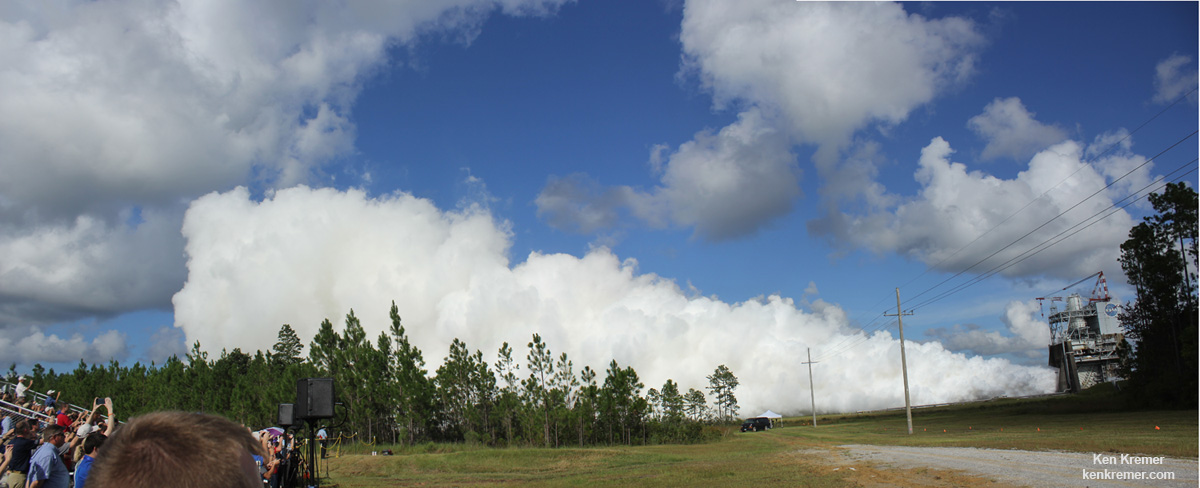
SLS is the most powerful booster the world has even seen and one day soon will propel NASA astronauts in the agency’s Orion crew capsule on exciting missions of exploration to deep space destinations including the Moon, Asteroids and Mars – venturing further out than humans ever have before!
NASA’s goal is to send humans to Mars by the 2030s with SLS and Orion.
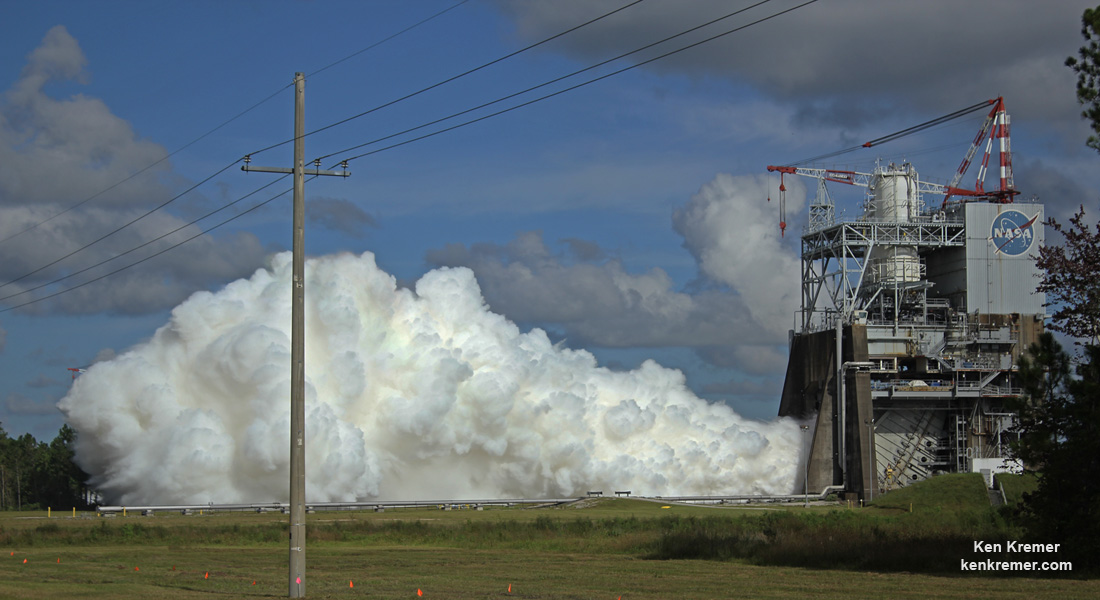
The primary goal of the development tests is to validate the capabilities of a new controller – or, “brain” – for the engine and to verify the different operating conditions needed for the SLS vehicle.
The test was part of a long continuing and new series aimed at certifying the engines for flight.
“We continue this test series in the fall. Which is a continuing part of our certification series to fly these engines on NASA’s SLS vehicle,” Wofford told me.
What was the primary objective of today’s test?
“Today’s test was mostly about wringing out the new control system. We have a new engine controller on this engine. And we have to certify that new controller for flight.”
“So to certify it we run it through its paces in ground tests. And we put it through a more stringent set of test conditions than it will ever see in flight.”
“The objectives we tested today required 420 seconds of testing to complete.”
Watch this NASA video of the full test:
Video Caption: RS-25 Rocket Engine Test Firing on 18 Aug. 2016: The 7.5-minute test conducted at NASA’s Stennis Space Center is part of a series of tests designed to put the upgraded former space shuttle engines through the rigorous temperature and pressure conditions they will experience during a launch of NASA’s Space Launch System mega rocket. Credit: NASA
What are the additional objectives from today’s test?
“Well you can’t do all of your objectives in one test. So the certification series are all about technical objectives and total accumulated time. So one thing we did was we accumulated time toward the time we need to certify this control system for the SLS engine,” Wofford explained.
“The other thing we did was you pick some technical objectives you want to put the controller through its paces for. And again you can’t do all of those in one test. So you spread them over a series. And we did some of those on this test.”
Aerojet Rocketdyne is the prime contractor for the RS-25 engine work and originally built them during the shuttle era.
The remaining cache of 16 heritage RS-25 engines are being recycled from their previous use as reusable space shuttle main engines (SSMEs). They are now being refurbished, upgraded and tested by NASA and Aerojet Rocketdyne to power the core stage of the Space Launch System rocket now under full development.
During launch they will fire at 109 percent thrust level for some eight and a half minutes while generating a combined two million pounds of thrust.
The SLS core stage is augmented with a pair of five segment solid rocket boosters (SRBs) generating about 3.3 million pounds of thrust each. NASA and Orbital just completed the QM-2 SRB qualification test on June 28.
Each of the RS-25’s engines generates some 500,000 pounds of thrust. They are fueled by cryogenic liquid hydrogen (LH2) and liquid oxygen (LOX).
The first liquid hydrogen (LH2) qualification fuel tank for the core stage was just welded together at NASA’s Michoud Assembly Facility in New Orleans – as I witnessed exclusively and reported here.
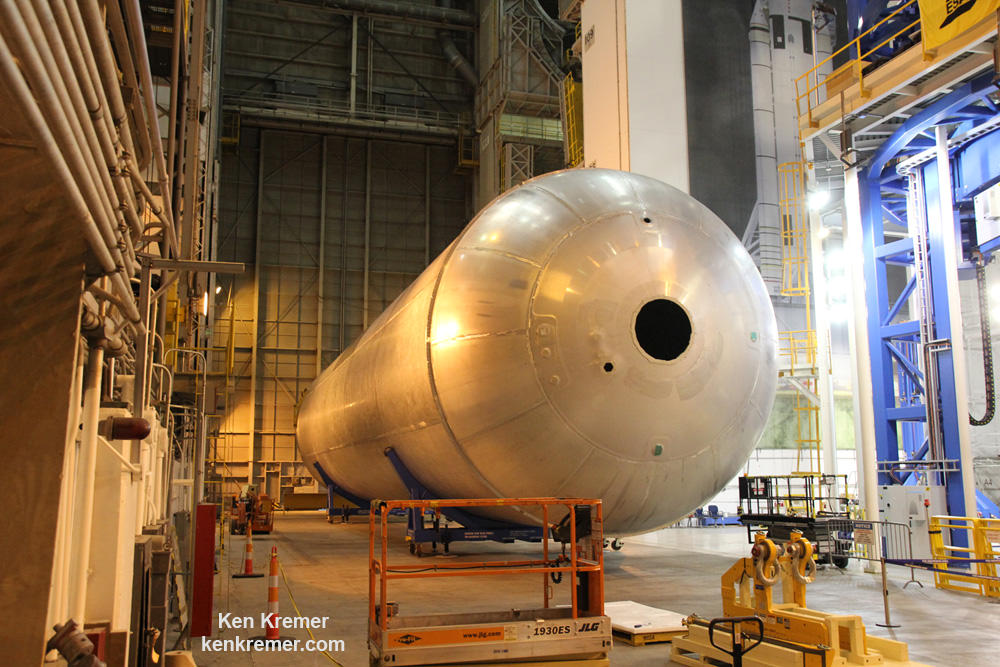
The RS-25 engines measure 14 feet tall and 8 feet in diameter.
For SLS they will be operating at 109% of power – a higher power level compared to a routine usage of 104.5% during the shuttle era.
They have to withstand and survive temperature extremes ranging from -423 degrees F to more than 6000 degrees F.
Why was about five seconds of Thursday’s test run at the 111% power level? Will that continue in future tests?
“We did that because we plan to fly this engine on SLS at 109% of power level. So it’s to demonstrate the feasibility of doing that. On shuttle we were certified to fly these engines at 109%,” Wofford confirmed to Universe Today.
“So to demonstrate the feasibility of doing 109% power level on SLS we ‘overtest’ . So we ran [today’s test] at 2 % above where we are going to fly in flight.”
“We will do more in the future.”
The fully assembled core stage intergrated with all 4 RS-25 flight engines will be tested at the B-2 test stand in Stennis during the first quarter of 2018 – some 6 months or more before the launch in late 2018.
How many more engines tests will be conducted prior to the core stage test?
“After today we will run 7 more tests before the core stage test and the first flight.”
“I’m thrilled. I’ve see a lot of these and it never gets old!” Wofford gushed.
The hardware for SLS and Orion is really coming together now and its becoming more and more real every day.

These are exciting times for NASA’s human deep space exploration strategy.
The maiden test flight of the SLS/Orion is targeted for no later than November 2018 and will be configured in its initial 70-metric-ton (77-ton) Block 1 configuration with a liftoff thrust of 8.4 million pounds – more powerful than NASA’s Saturn V moon landing rocket.
Although the SLS-1 flight in 2018 will be uncrewed, NASA plans to launch astronauts on the SLS-2/EM-2 mission slated for the 2021 to 2023 timeframe.
Stay tuned here for Ken’s continuing Earth and Planetary science and human spaceflight news.
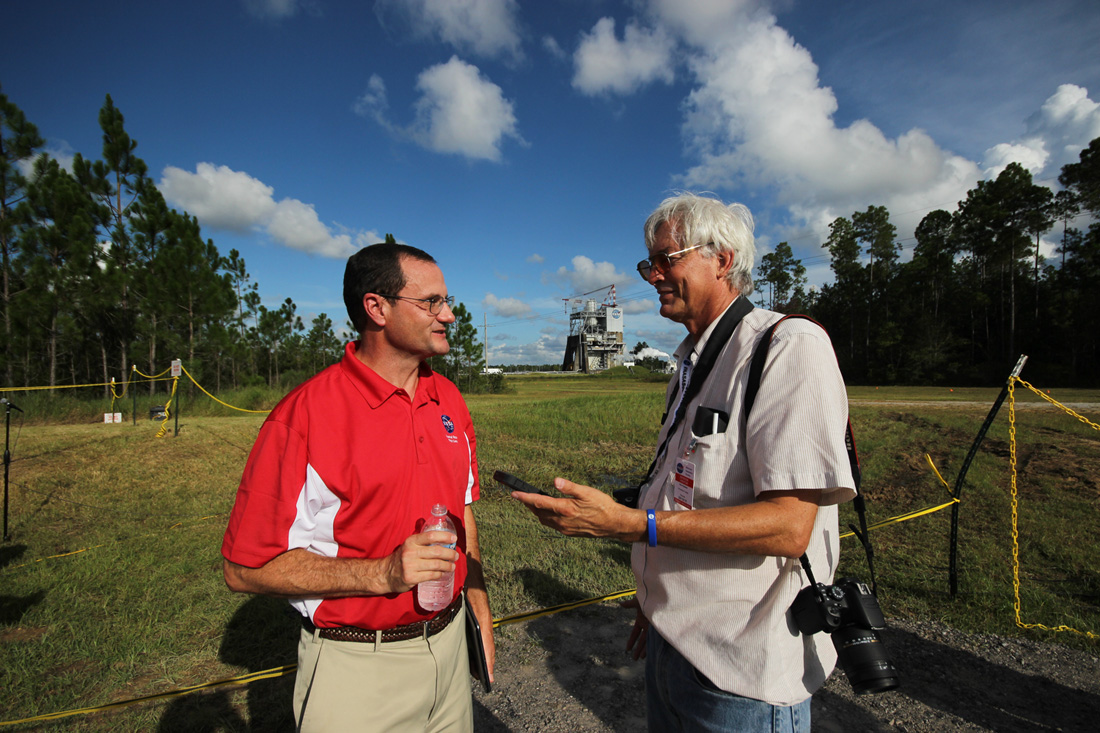

with 16 engines available, i assume Aerojet Rocketdyne will built more as everyone expects more than 4 launches of the new SLS but will the newly manufactured RS-25’s will be built differently since they’ll only be used once and then thrashed in the Atlantic?
Actually, they need to share spare parts between them, so the stored engines will only be enough for 3 launches. Design of a non-reusable version is underway. They will be as similar as possible, but modified for modern manufacturing methods like 3D printing to lower costs. See a presentation by the manufacturing companies in the treasure trove below, August 3rd, 2016:
http://spirit.as.utexas.edu/~fiso/archivelist.htm
The fact that the engines in storage which have been flewn to orbit with perfect results, is a big strength for SLS. I think it will fly three times because of this, which is enough to save face politically for this scandalously maldesigned project. But then, ten years from now, private companies will have developed even larger launchers which are 90% cheaper and the old 1970s SLS will be scrapped. It will never fly humans to Mars.
As expensive as these engines are, why hasn’t NASA made any attempts to recover them? Sure the solid rocket boosters are recovered at sea, but they need some serious refurbishing because of the damage they encounter from sea water after landing in it. NASA needs to come up with a better way…..
The solid boosters will not be recovered for SLS. It was actually more expensive to recover them for the Shuttle than to build new ones. The main engines used to be on the orbiter which landed, SLS won’t land so engines cannot be recovered. (ULA and Airbus have proposed to recover engines but dropping them, but that’s on completely different launcher designs, and is quite speculative).